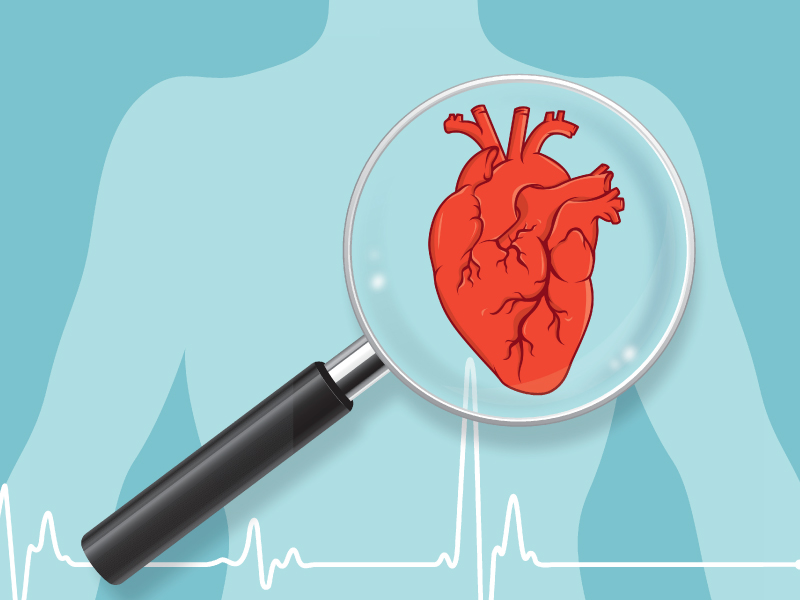By: Aubaid Ahmad Akhoon
A heart attack, also known as a myocardial infarction, occurs when the blood flow to a part of the heart is blocked, usually by a build-up of plaque in the coronary arteries. This can cause damage or death of the heart muscle. Symptoms of a heart attack include chest pain or discomfort, shortness of breath, and feeling weak or lightheaded.
There are several risk factors for heart attacks, including high blood pressure, high cholesterol, smoking, diabetes, and a sedentary lifestyle. Additionally, certain populations may be at increased risk for heart attacks, such as people with a family history of heart disease or those who live in areas with high levels of air pollution.
It’s important to note that there are several factors that can lead to heart disease, including genetics, lifestyle, diet, and environment. It’s also worth mentioning that living in a conflict zone or in an area of political unrest can also contribute to the development of many diseases, including heart disease, as it can lead to stress, anxiety, and depression which can all be risk factors for heart disease.
In addition to the risk factors I mentioned earlier, certain populations may be at increased risk for heart attacks. For example, men are generally at higher risk for heart attacks than women, and the risk increases as people age. People with a history of heart disease or stroke also have an increased risk for a heart attack.
Certain medical conditions, such as obesity, sleep apnea, and metabolic syndrome (a group of conditions that include high blood pressure, high blood sugar, and abnormal cholesterol levels) can also increase the risk for a heart attack.
In terms of lifestyle, smoking and excessive alcohol consumption can also increase the risk for heart attacks. A diet that is high in saturated and trans fats, cholesterol, and salt can also contribute to the development of heart disease.
When it comes to the environment, living in an area with high levels of air pollution can increase the risk of heart disease. High stress levels and lack of access to healthcare are also environmental factors that can contribute to the development of heart disease.
It’s important to note that in regions like Kashmir where there is a long-standing political unrest and conflict, there is a high level of stress and anxiety among the population which can increase the risk of heart disease. Also, the lack of access to healthcare, difficulty in obtaining medical supplies and equipment, and restricted mobility can make it difficult for people to get the care they need to manage or prevent heart disease.
It’s essential to consult with a healthcare professional for an accurate assessment of your risk for a heart attack and to develop a plan to reduce your risk. I would recommend consulting with a healthcare professional for more information about heart attacks and how to reduce your risk for them.
Preventions of cardiovascular diseases
“The heart is the hub of all that is vital, and its health is essential to a fulfilling life.”
There are several ways to prevent cardiovascular disease, including:
Eating a healthy diet that is low in saturated and trans fats, cholesterol, salt, and added sugars.
Maintaining a healthy weight and body mass index (BMI).
Regular physical activity, such as brisk walking, jogging, cycling, or swimming.
Not smoking or using tobacco products.
Managing stress through techniques such as meditation, yoga, and deep breathing.
Managing other health conditions, such as high blood pressure and diabetes.
Regular check-ups with a healthcare provider to monitor blood pressure, cholesterol, and blood sugar levels.
Taking medication, if prescribed by a healthcare provider, to lower risk factors for cardiovascular disease.
It’s important to note that some risk factors for cardiovascular disease, such as family history and age, cannot be changed. However, by taking steps to control the risk factors that can be changed, individuals can reduce their overall risk for cardiovascular disease.
In addition to the preventions mentioned earlier, there are other lifestyle changes that can help lower the risk of developing cardiovascular disease. These include:
Getting enough sleep: Lack of sleep has been linked to an increased risk of heart disease, so it’s important to get 7-8 hours of sleep per night.
Managing stress: Chronic stress can contribute to the development of heart disease, so it’s important to find healthy ways to manage stress, such as through exercise, meditation, or talking to a therapist.
Eating a diet rich in fruits and vegetables: Fruits and vegetables are high in vitamins, minerals, and antioxidants that can help lower the risk of heart disease.
Maintaining healthy relationships: Studies have shown that people with strong social support have a lower risk of heart disease.
Avoid second-hand smoke: Being exposed to second-hand smoke can increase the risk of heart disease, so it’s important to avoid smoking and to avoid being around people who are smoking.
Get your blood pressure and cholesterol checked regularly: High blood pressure and cholesterol are major risk factors for heart disease, so it’s important to have them checked regularly.
It’s important to note that preventing cardiovascular disease involves a combination of lifestyle changes and, in some cases, medication. Consulting a healthcare professional is the best way to determine an individualized plan to reduce the risk of cardiovascular disease.
“A healthy heart is not just about good physical condition, it’s also about keeping the mind and emotions in balance. Cultivate a positive mindset, engage in activities that bring joy and practice stress management techniques to keep your heart young and strong.”
The Author is a Motivational speaker/ Weekly ‘Education Quill’ Associate Editor Working as Sr. Edp head at DD Target PMT Kashmir the Reputed institute For Medical/JEE /Foundation, coaching classes and can be reached at akhoon.aubaid@gmail.com




